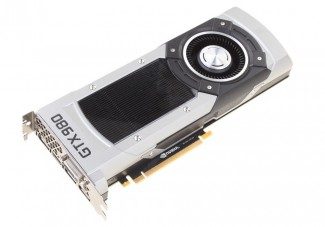After the surprise announcement that Valve would be revealing a “SteamVR Dev Kit” at next week’s GDC 2015, yet another huge entrant may be about to join the virtual reality arena. The company is reportedly on the verge of revealing a “Titan VR” headset, and may do so at an event next week during GDC.
‘Heating up’ hardly describes what’s in store for VR at GDC 2015; at this point we’ve reached ‘fever pitch’.
SlashGear speculated yesterday that GPU maker Nvidia might reveal a virtual reality headset at a March 3rd event titled ‘Made to Game’. Invites to the event included a tease from the company’s President, Jensen Huang, that the revealed is “more than 5 years in the making” and will “redefine the future of gaming.”
See Also: The Games Industry is Gearing Up for VR’s Arrival at GDC 2015 – Road to VR will be There
Today our friendly neighbors at VRFocus reported that “multiple sources” had confirmed that Nvidia would be revealing their own VR headset, which may be named ‘Titan VR’. Further, the blog says “The product is being created by the team behind Nvidia’s SHIELD tablet,” and speculates that it could be revealed during Nvidia’s GDC presentation, ‘VR Direct: How NVIDIA Technology Is Improving the VR Experience’ on March 4th at 2pm PST.
Road to VR will be at Nvidia’s ‘Made to Game’ event and also at the ‘VR Direct’ session to report on what’s revealed.


Baseline Latency: Our engineers worked to cut all aspects of the connection between the game and the GPU, significantly improving latency.
MFAA: Using a new technology called multi-frame sampled anti-aliasing, or MFAA, Maxwell can combine many AA sample positions, producing what appears to be a higher-quality image. And it does this without the performance hit caused by other anti-aliasing technologies.
Asynchronous Warp: This starts with the last scene rendered, and lets the GPU update it based on head position information. By warping the image later in the rendering pipeline, Maxwell cuts discontinuities between head movement and action on screen. And by doing it asynchronously, it avoids stalling the GPU, robbing it of performance.
SLI: We’re also tuning the way our GPUs work together when they’re paired to drive virtual reality experiences. In the past, our GPUs would alternate rendering frames when joined in SLI mode. For VR, we’re changing the way our GPUs work in SLI, with each GPU rendering one display.
DSR: With the displays in a VR headset resting close to the user’s eyes, higher resolution can improve the VR experience. Dynamic Super Resolution (DSR) – which we’re introducing with Maxwell – helps us take the resolution from 1 megapixel per eye to 4 megapixels per eye.
GeForce Experience: Rather than asking users to tweak all these settings when using VR, we’re implementing them to run automatically with our GeForce Experience software.
Optimized Content: Few applications support VR headsets. So we’re bringing VR support to games that already work with NVIDIA 3D Vision.
Although Nvidia has been slow to get these features out the door, we expect to get an update during the company’s ‘VR Direct’ event.

